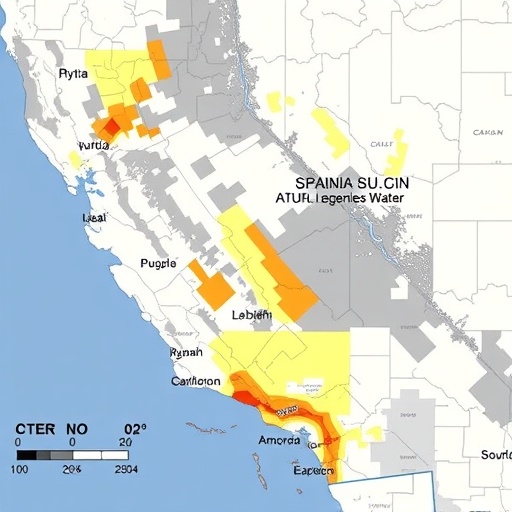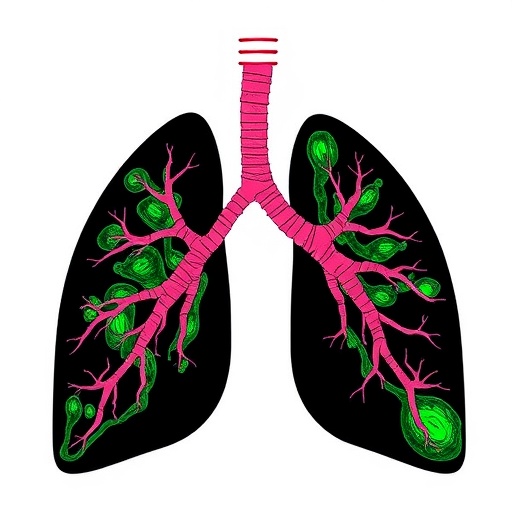
In a groundbreaking advance poised to revolutionize lipidomics, researchers from the University of California, San Diego, and the University of Graz in Austria have unveiled a novel computational method that accurately determines the precise positions of omega double bonds within complex lipid molecules. This leap forward addresses a long-standing challenge in the field of biochemistry and analytical chemistry, where pinpointing the exact location of unsaturation sites in intact lipids has been notoriously difficult, particularly in heterogeneous biological samples like human tissues and blood.
Omega fatty acids, integral components of human health, play critical roles not only in fat metabolism but also in cellular signaling and inflammation regulation. Alterations in the position of double bonds along fatty acyl chains often reflect enzymatic dysfunction or pathological metabolic states, including cancer and autoimmune diseases. Therefore, advancing the capability to decode these subtle structural nuances holds tremendous potential in diagnosing and understanding disease mechanisms at the molecular level.
Historically, the identification of the omega double bond positions in lipids relied heavily on highly specialized instrumentation and labor-intensive experimental protocols that limited accessibility to only a few elite research laboratories worldwide. Furthermore, these traditional approaches lacked the sensitivity necessary to detect double bond positions in lipid species present at low abundance, thereby impeding comprehensive molecular profiling in complex biological matrices. The new computational strategy developed by the UC San Diego and University of Graz team effectively transcends these limitations, democratizing lipid structural analysis and significantly improving sensitivity.
.adsslot_fugvtk4IoK{width:728px !important;height:90px !important;}
@media(max-width:1199px){ .adsslot_fugvtk4IoK{width:468px !important;height:60px !important;}
}
@media(max-width:767px){ .adsslot_fugvtk4IoK{width:320px !important;height:50px !important;}
}
ADVERTISEMENT
At the heart of this innovation lies an advanced algorithm that integrates routine liquid chromatography–mass spectrometry/mass spectrometry (LC-MS/MS) lipidomics data with sophisticated computational simulations and modeling techniques. Unlike conventional methods requiring chemical derivatization or ultra-specialized mass spectrometric setups, this approach enables the unambiguous elucidation of carbon-carbon double bond localizations across a broad array of lipid species using widely available LC-MS/MS platforms. This compatibility ensures that many research groups worldwide can implement the technique without the burden of costly instrumentation upgrades.
The computational framework leverages detailed fragmentation patterns generated during tandem mass spectrometry to detect diagnostic ions that correspond uniquely to specific double bond positions. By systematically analyzing the spectral data through a series of simulation-driven models, the algorithm predicts the most probable locations of unsaturation sites with high confidence. Such modeling not only accelerates data interpretation but also circumvents the ambiguity associated with conventional spectral analysis, wherein overlapping ion signals often obscure definitive structural assignments.
This methodological breakthrough extends beyond mere positional identification. The enhanced sensitivity of the method enables researchers to profile lipids present at minuscule concentrations—levels that were previously inaccessible with standard analytical procedures. Consequently, it opens avenues for investigating subtle lipidomic variations directly linked to pathological conditions, offering an unprecedented molecular lens into disease biology.
Moreover, the capacity to resolve individual fatty acyl carbon-carbon double bond positions in complex biological samples enriches our understanding of lipid diversity and function at the systems biology level. Lipids are far from passive structural components; their compositional intricacies influence membrane fluidity, signaling cascades, and metabolic fluxes. Therefore, clarifying their fine structural details aids in decoding cellular physiology and pathophysiology with greater precision.
The interdisciplinary collaboration underpinning this work underscores the synergy between computational science and experimental biochemistry, highlighting how in silico modeling can amplify the power of conventional analytical chemistry. Through meticulous algorithm development and validation, the team has curated a robust toolset that streamlines lipidomic workflows, reduces reliance on specialized hardware, and fosters broader participation in lipid research.
From a clinical perspective, this innovation holds promise in biomarker discovery, enabling more refined metabolomic signatures that could detect early disease states or monitor therapeutic responses. The method’s adaptability to routine LC-MS/MS instrumentation also facilitates large-scale population studies and translational research, bridging fundamental science with clinical utility.
Furthermore, the computational approach is designed to be scalable and flexible, amenable to integration with emerging lipidomics platforms and compatible with evolving data analytics pipelines. This future-proofs the technique, ensuring its relevance amid rapidly progressing mass spectrometry technologies and expanding lipid databases.
Beyond human health, the method offers valuable applications in nutrition science, pharmacology, and environmental monitoring, where lipid composition and structure profoundly influence biological outcomes and ecological dynamics. The ability to readily analyze lipid isomers with high fidelity equips researchers across disciplines with a powerful analytical lens.
In sum, this pioneering work sets a new benchmark for lipid structural analysis, augmenting the lipidomics toolkit with computational precision, enhanced sensitivity, and widespread accessibility. Through this lens, the subtle yet critical variations in fatty acid unsaturation patterns emerge as accessible, quantifiable molecular signatures, propelling forward the frontier of metabolic research and biomolecular diagnostics.
Subject of Research: Computational simulation/modeling of lipid omega double bond positions
Article Title: Computationally unmasking each fatty acyl C=C position in complex lipids by routine LC-MS/MS lipidomics
News Publication Date: 11-Aug-2025
Web References: http://dx.doi.org/10.1038/s41467-025-61911-x
Image Credits: Edward Dennis lab / UC San Diego
Keywords: Fatty acids, Lipids, Mass spectrometry
Tags: advances in analytical chemistrycellular signaling and inflammation regulationcomputational methods in biochemistrydiagnosing diseases through lipid structureenzymatic dysfunction and lipidshuman tissue lipid analysislipidomics innovationsmetabolic disorders and fatty acidsomega double bond identificationomega fatty acids researchrole of omega fatty acids in healthunsaturation sites in lipids





